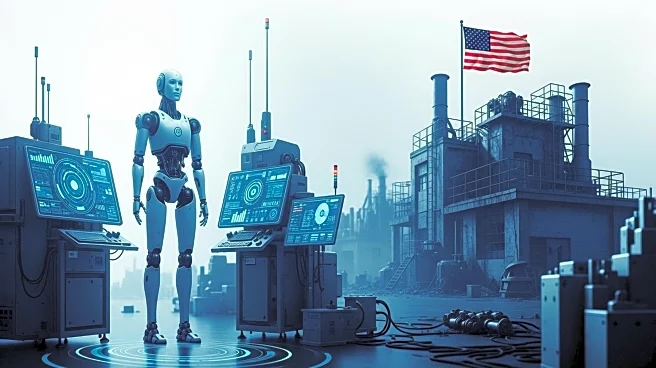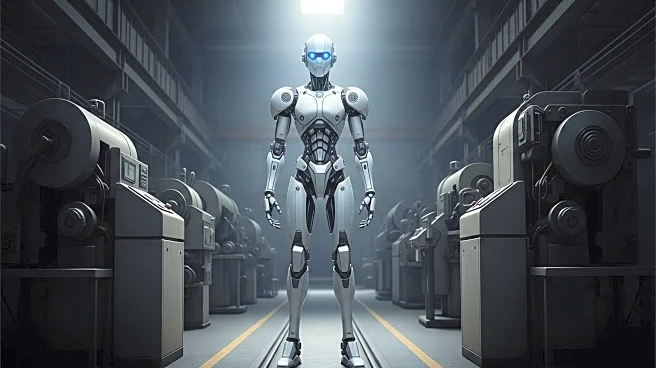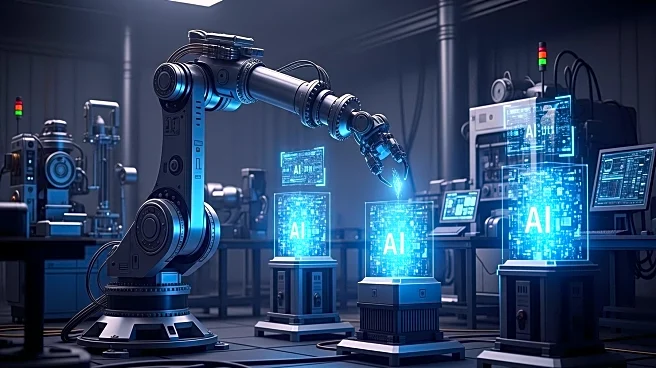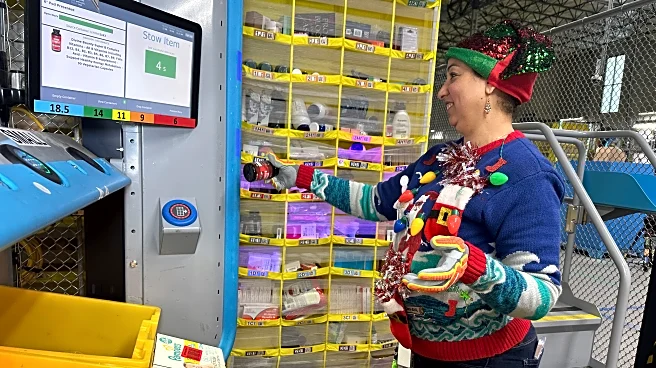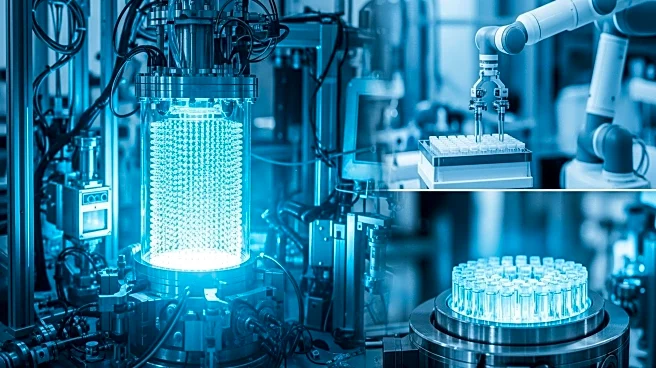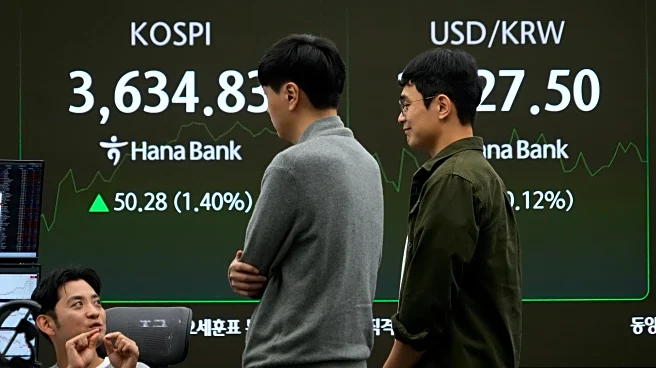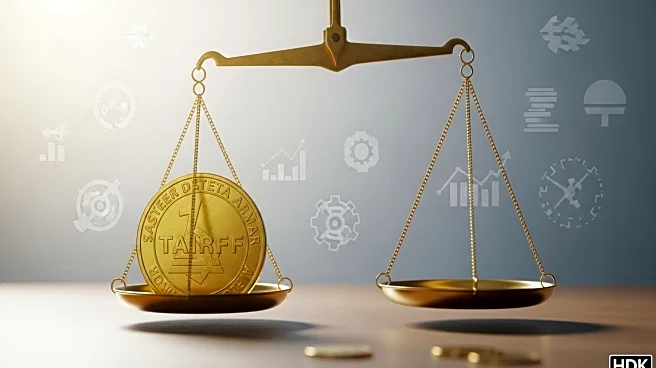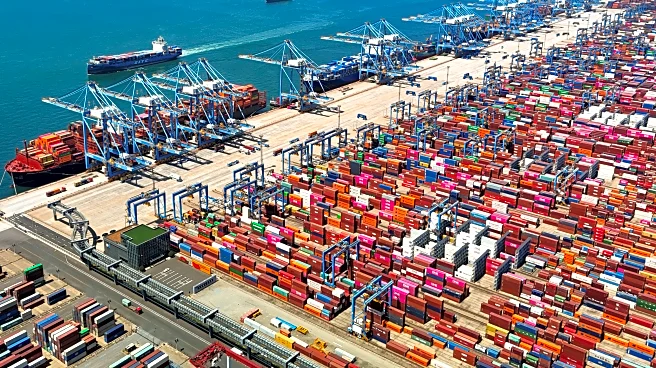What's Happening?
The U.S. is witnessing a divergence between two key industries: artificial intelligence (AI) and manufacturing. AI is experiencing a significant investment surge, with tech-company valuations reaching trillions of dollars. This boom is driven by visions of AI transforming business operations, leading to increased demand for microchips, cooling systems, and data centers. In contrast, the manufacturing sector is struggling, with a loss of 38,000 jobs since the start of the year, according to the Bureau of Labor Statistics. Despite efforts by the Trump administration to protect U.S. manufacturers through tariffs, the sector continues to face challenges, including decreased factory investment and fewer startups. The AI industry's growth is overshadowing manufacturing's decline, raising concerns about job creation and economic stability.
Why It's Important?
The contrasting fortunes of AI and manufacturing have significant implications for the U.S. economy. The AI boom is contributing to technological advancements and economic growth, but it may not generate as many jobs as traditional manufacturing. Data centers, which are central to AI operations, require fewer workers, potentially limiting employment opportunities. The manufacturing sector's decline affects blue-collar workers, who typically benefit from higher wages in this industry. The disparity between these sectors highlights the need for balanced economic policies that support both technological innovation and traditional manufacturing. The potential for an AI investment bubble poses risks to economic stability, as a collapse could have widespread effects.
What's Next?
The U.S. government continues to invest in expanding microchip production facilities, with projects funded by the Chips Act of 2022 still under construction. These efforts aim to bolster manufacturing and create high-paying jobs. However, the long-term impact of AI investments on employment remains uncertain. Policymakers may need to address the economic and social implications of AI's growth, ensuring that technological advancements do not exacerbate job losses in manufacturing. The Trump administration's pro-growth policies, including tariffs and tax incentives, aim to support U.S. manufacturing, but the effectiveness of these measures will be closely monitored.
Beyond the Headlines
The rise of AI and the decline of manufacturing reflect broader shifts in the U.S. economy. The focus on AI highlights the increasing importance of technology in driving economic growth, while manufacturing's struggles underscore the challenges faced by traditional industries. Ethical considerations arise as AI technologies advance, including concerns about job displacement and the need for responsible AI development. The long-term impact of these trends may reshape the U.S. labor market and influence public policy decisions.
